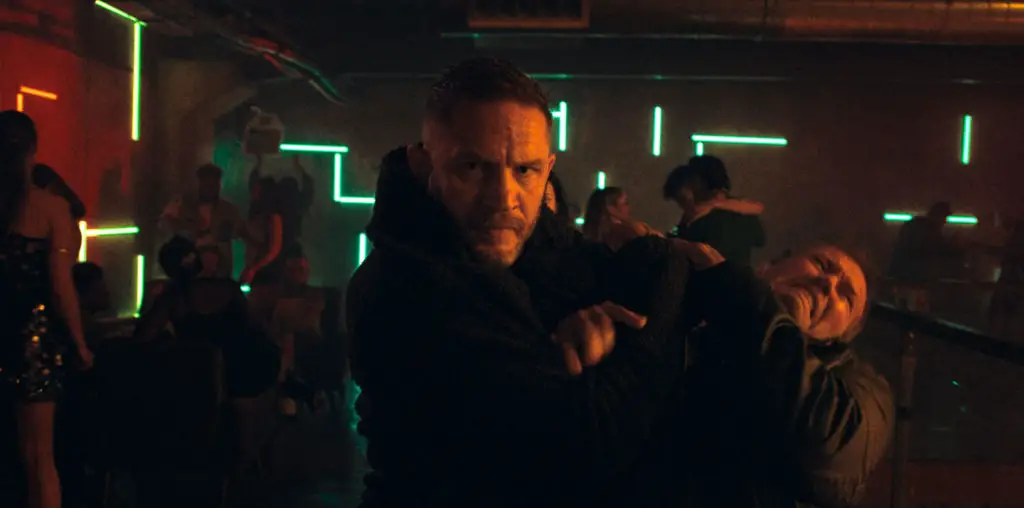
They call it the body count movie. A group of people – a pack of strangers in all shapes and sizes – are gathered in one location where they’re killed off one by one. As the numbers shrink, the tension builds and the characters look at each and wonder who’s next. It’s a technique that’s been used in everything from “The Most Dangerous Game” – maybe the cinematic inventor of the body count movie – right up to the “Friday the 13th” films and their numerous clones. On second thought, this sounds more like the Ten Little Indians genre, created by that master of suspense herself, Ms. Agatha Christie, who, in her brilliant story, “And Then There Were None,” was able to kill off her characters and explain it nice and neat. It’s been almost a century since Ms. Christie wrote “And Then There Were None” and her story remains the best example of the genre – and it still has the best ending.
The new entry in the genre, “Mindhunters,” is a film that, up to a point, Ms. Christie would’ve been quite intrigued by, right up until the final explanations are given – is there anything more important in a story like this than the how and why? – where she would’ve thrown up her hands and mockingly laughed at the screen. I know how she feels. Here’s a film that exhibits all kinds of joy in uncoiling a story with no ending, or an ending that’s so arbitrary you get the feeling that the filmmakers just threw names in a hat to see who their killer would be. Why didn’t they just copy Agatha Christie? Even the 1966 remake of “Ten Little Indians” was pretty good, just because it followed Ms. Christie’s story to a tee. After seeing “Mindhunters,” I’m not sure there’s any other way to tell the story.
The characters in “Mindhunters” are FBI trainees in the psychological profiling division of the bureau – young and hungry. Basically, these are the future Will Grahams and Clarice Starlings – they all had to learn from somebody – who are sent by their leader(Val Kilmer)to conduct a serial killer training exercise on a remote island that acts as a cross between Hogan’s Alley and Westworld. Their task: Profile a fictional serial killer whose crimes have been laid out for them all over the island which doubles as a fully functional Black Ops facility. Soon, one of the trainees is killed – his face cracked apart by a liquid nitrogen trap – and the trainees soon make the shattering discovery that their killer is, in fact, one of them.
What this means is that the trainees have to profile a killer who is one of them, a killer trained in the techniques of serial profiling. Neat. It also means that this tightknit unit – the characters have all come up in the bureau together, except for a shadowy cop(LL Cool J)who’s tagged along for the exercise – don’t really know each other that well, but then, do we really ever know anybody? Good stuff. What do we make of an ominous murder clock that predicts the exact time when a trainee will be killed? The time approaches, the characters look at each other, and someone dies every time. Also very good.
You’d think the buddy system would be effective in a situation like this and I’m reminded of a film like John Carpenter’s “The Thing” which was robbed of much of its suspense by the fact that the characters kept wandering off by themselves for the sole purpose of having the creature attack them. “Mindhunters” deftly forestalls questions of plausibility by creating all kinds of interesting obstacles – and deaths(one character smokes a poisoned cigarette, another gets on an explosive-rigged boat) – by making circumstance, fate, and time the villain of the story instead of some masked killer.
These scenes are a lot of fun to watch and they illustrate how a tense thriller can involve the viewer unlike anything else, certainly in cinema. The problem with “Mindhunters” – and what makes all of the excellence in the film kind of moot – is the identity of the killer which, when you think about it, is the most important part of the film. It’s at this point that I groaned with the dawning realization that the film had raised all sorts of interesting and scary psychological questions without having a clear idea of the answers. You shouldn’t tell a great story without knowing where it’s headed. Well, unless “Mindhunters” had decided to be really bold and daring and not revealed its killer. I imagine such an ending would get terrible test scores, but it might’ve been appropriate and true to the material.
What happens is that, having established such a great set-up, “Mindhunters” almost backs itself into a corner – as most thrillers do – with the need to have an equally interesting explanation. The revealing of the killer in “Mindhunters” is so arbitrary and lazy – not just in the character, but with all of the tired “I Know What you Did Last Summer” stalking shots – that we’re left feeling that the story has led to nowhere. Agatha Christie had the ideal explanation for this premise, so why didn’t director Renny Harlin just copy the formula from “And Then There Were None” onto “Mindhunters?” This wouldn’t have been terribly original – is anything? – but it would’ve been logical and satisfying. The result is a film that betrays itself by not following its story through to a believable and psychological conclusion.
It’s too bad because “Mindhunters” could’ve been a great thriller, and one is tempted to recommend the film for its flashes of excellence, but you can’t surrender yourself to only half of a good movie and that’s exactly what’s wrong with “Mindhunters.”
Disagree with this review? Think you can write a better one? Go right ahead in Film Threat’s BACK TALK section! Click here>>>


